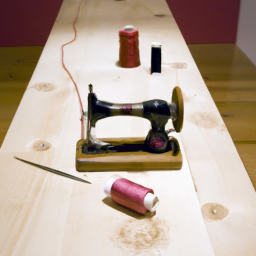
History of Fabric Sewing and Stitching
sewing and stitching”>
Fabric sewing and stitching have a long and rich history that spans thousands of years. Humans have been using needles and thread to create functional and decorative items since ancient times. It is an art form that has evolved through different civilizations and has become an integral part of our culture today.
The practice of sewing started during the Paleolithic era when early humans used animal bones or ivory needles to sew together animal hides for clothing and shelter. Over time, the materials used for sewing changed and progressed. Needles made from various metals, like copper and bronze, replaced primitive bone tools. With the advent of the Iron Age, steel needles became popular due to their durability.
Sewing techniques advanced with the rise of ancient civilizations, such as the Egyptians, Greeks, and Romans. These cultures developed intricate sewing patterns and stitches, some of which are still used today. The invention of the spinning wheel in the 13th century further revolutionized textile production, leading to increased demand for sewn garments.
By the Middle Ages, sewing was not only a skill used for practical purposes but also a means of artistic expression. Embroidery and needlework became highly valued, with elaborate designs created to embellish clothing, tapestries, and household items. Skilled seamstresses and tailors were highly respected and sought-after.
The industrial revolution in the 18th and 19th centuries brought significant changes to the sewing industry. The invention of the sewing machine in the mid-19th century by Elias Howe and subsequent improvements by Isaac Singer revolutionized the way clothes were made. Mass production became possible, and sewing shifted from being a time-consuming handcraft to a mechanized process. This development allowed for greater access to affordable clothing.
Today, sewing and stitching continue to be relevant skills, both in industrial production and as a popular hobby. Sewing machines have evolved further, incorporating advanced features, and allowing individuals to create unique garments and crafts effortlessly. The rise of online communities and tutorials has also made it easier for beginners to learn and share their creations.
In conclusion, the history of fabric sewing and stitching reflects the ingenuity and creativity of humans throughout the ages. From its humble beginnings with bone needles to the advanced sewing machines of today, this craft has shaped our society and left an indelible mark on our cultural heritage.




